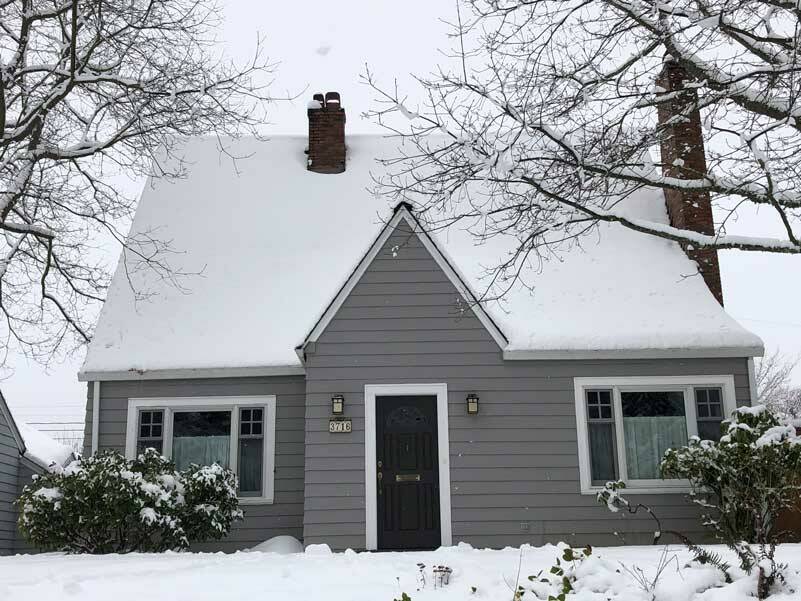By Morf Morford
Tacoma Daily Index
For most, if not all of us, buying a house is the largest financial commitment we might ever make.
And for most of us, unfortunately, it might be larger, sometimes much larger, than we had anticipated.
Back in the 1920s, French painter, writer, architect and planner Charles-Édouard Jeanneret (AKA Corbu) published his influential book, Toward an Architecture, in which he famously wrote “Une maison est une machine-à-habiter” (“A house is a machine for living in”).
I must admit that I’ve never really liked that description of housing. But life experience has shown me how accurate, if not insightful, that metaphor is.
As much as I don’t like the idea of living in a machine, if there is anything anyone learns (or at least should learn), it is that a house, like any other humanly constructed device, needs continual maintenance.
And, like many of us in the past year or two, you might have been taking a closer than usual look at both the housing market and physical structures.
When you look at houses on a semi-regular basis, you realize that there is a lot to notice.
And, if you are in the market you discover that there are many “deal-breakers”. Or at least there should be.
Besides the selling price of a house, which may be VERY different from the original asking prices (which will also be far from the house’s previous selling price – even if that previous sale was a year – or less – ago).
As I look at houses now, my primary question that I ask myself is, “What is the one thing that would keep me from buying this house?”
Based on my experiences, and some research, here are some things to look out for as you take a close look at what might be a dream home, but after a closer look, might be more like a bad dream than a good one.
Doors don’t close all the way – If there are doors that don’t shut all the way, or stick when they should move freely, there could be a problem with the home’s structural framing. Doors are the literal “moving parts” of a house. Make sure they work smoothly and look (and fit) as if they belong there.
Water stains – Look up! Look down! Look all around! If you see water stains on the ceiling or walls, there may be plumbing issues on an upper floor. Water stains can indicate a leaky roof or window, which may mean rotting wood or mold.
In other words, water (and water damage) can come from inside or outside. But wherever it comes from, water where it does not belong is bad news: very expensive bad news.
Out-of-place paint – it makes sense for a house on the market to have some fresh, touch-up coats of paint, but if you notice fresh paint on just one wall of a room, it could be hiding a problem (like a patch of mold or mildew).
What’s that smell? – Strong air fresheners or other smells can mask hidden odors, like carpet covered in pet urine. A musty smell may mean moisture, which could also mean mold.
Windows – Hold your hand near the edge of a window. Do you feel air blowing through? Drafty windows mean high heating bills!
Look out for windows that have fog in between the panes, don’t close properly, or have worn weather-stripping. Older windows (especially single-pane) are less energy efficient, and problems here may be an indictor of deeper (and more expensive) issues.
Warped, cracked or crooked siding – if siding panels are warped or malleable, they may be rotted. Peeling paint may be a sign of water, which could be seeping into the home’s foundation.
Large foundation cracks – Small cracks in a home’s foundation are common, if not inevitable, but large cracks (wider than a ½ inch) could indicate an unstable foundation or structural problems.
Aging HVAC system – confirm when the heating, ventilation, and air conditioning (HVAC) units were last replaced. If they are older they are likely to be less energy efficient — which means a bigger electricity bill — especially if they are nearing their expiration dates. A heat pump or air conditioner should be replaced after 10 years, and a furnace or boiler should be replaced after 15 years.
Squeaky, squawking or rattling garage door – Open the garage door and listen for unusual sounds – especially sign of a struggle as it open or closes. Squealing may indicate the door is out of balance, and rattling may signify a loose chain or support rails
Not quite good enough DIY improvements – Did the previous owners take a crack at large-scale DIY projects? Unless they are experts, this may mean costly repairs down the road. Look for signs like gaps in fixtures or uneven tile work.
Small problems – If a leaky faucet or a dead light bulb doesn’t seem like a big deal to you, it definitely isn’t a big deal to the current homeowner. What other (bigger) problems have gone unnoticed?
And a constant principle of home ownership is that small problems never stay small. That squeak, rattle or loose fitting will never stop until it completes its job.
Your house is not that different from your car; keep it tuned up and it will serve you well; ignore that basic maintenance and it will become the monster that swallowed Cleveland.
Remember that term “sweat equity”? You don’t really know your house until you’ve sweated (or cursed) some corner of it that no one else has ever worked on.






